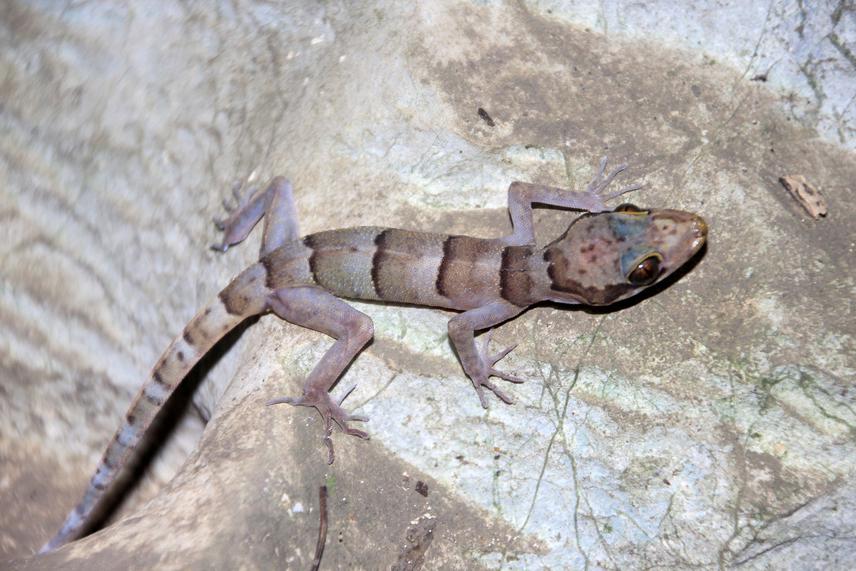Vinh Quang Luu
Other projects
25 Mar 2013
The Diversity of the Reptile Fauna of Hin Nam No National Biodiversity Conservation Area (Laos)
12 Mar 2014
Exploration of the Herpetofauna Diversity in Karst Forests of the Hin Nam No National Protected Area, Central Laos
19 Mar 2015
The Annamite Mountain Range: An Evolutionary Barrier for Herpetofauna? A Case Study in the Karst Forest of the Hin Nam No National Protected Area, Central Laos
The main goal is to clarify evolutionary processes of species boundaries, biogeographical relationships, and habitat partitioning of Cyrtodactylus species in karst formations in and surrounding Hin Nam No.

Cyrtodactylus cf. bansocensis. © Vinh Quang Luu
The species-rich clade of Bent-toed Geckos (Cyrtodactylus) has recently become a model group to study divergent evolution and adaptation of ecomorphologies among lizards, due to the variety of colorful body patterns and characteristic body shapes, sizes, and life histories found among the many extant representatives (Grismer et al. 2015). Recent evidence suggests that a single lineage of the genus Cyrtodactylus, entering Southeast Asia in the early Oligocene about 35 mya, gave rise to all present-day species (Agarwal et al. 2014), but the evolution and diversification of Cyrtodacylus in this region is still little understood in respect to the ever increasing rate of new species descriptions (e.g., Luu et al. 2014, Nazarov et al. 2014, Luu et al. 2015). In particular the recent findings of cryptic species in Southeast Asian Cyrtodacylus, i.e. species that share a similar morphotype but are separable by molecular data (e.g., Ziegler et al. 2010), seems counterintuitive in respect to the well-described divergent evolution of ecomorphologies in this group. A common assumption is that cryptic species arose so recent that differentiating morphological traits have not yet evolved (Bickford et al. 2007).
This hypothesis can be resolved by comparative phylogeny. Hin Nam No NP turned out to be in a center of diversification in Cyrtodactylus species. Instead of a single Cyrtodactylus species, a whole complex of cryptic species appears to be distributed in this area between Laos and Vietnam, which has crucial consequences for species conservation. A comparison of the sampled species in Laos with species collections from Phong Nha - Ke Bang on the opposite side of the Annamite Mountain Range will identify the factors (e.g. the complex geological and/or climatic history of the northern Truong Son Range) that determine species compositions in Hin Nam No. The conservation status of species and threats to the biodiversity of Hin Nam No will be described. Based on these new findings, new recommendations for conservation management in the protected area and buffer zones will be proposed. An ongoing crucial objective of the project is to raise the awareness for conservation among local stakeholders. By distributing posters and booklets and doing the field work together with Laotian scientists and forest rangers, we expect to provide continuously a better understanding and appreciation of biodiversity conservation amongst the stakeholder communities, and to strengthen the capacity for participation in future research and/or conservation initiatives.